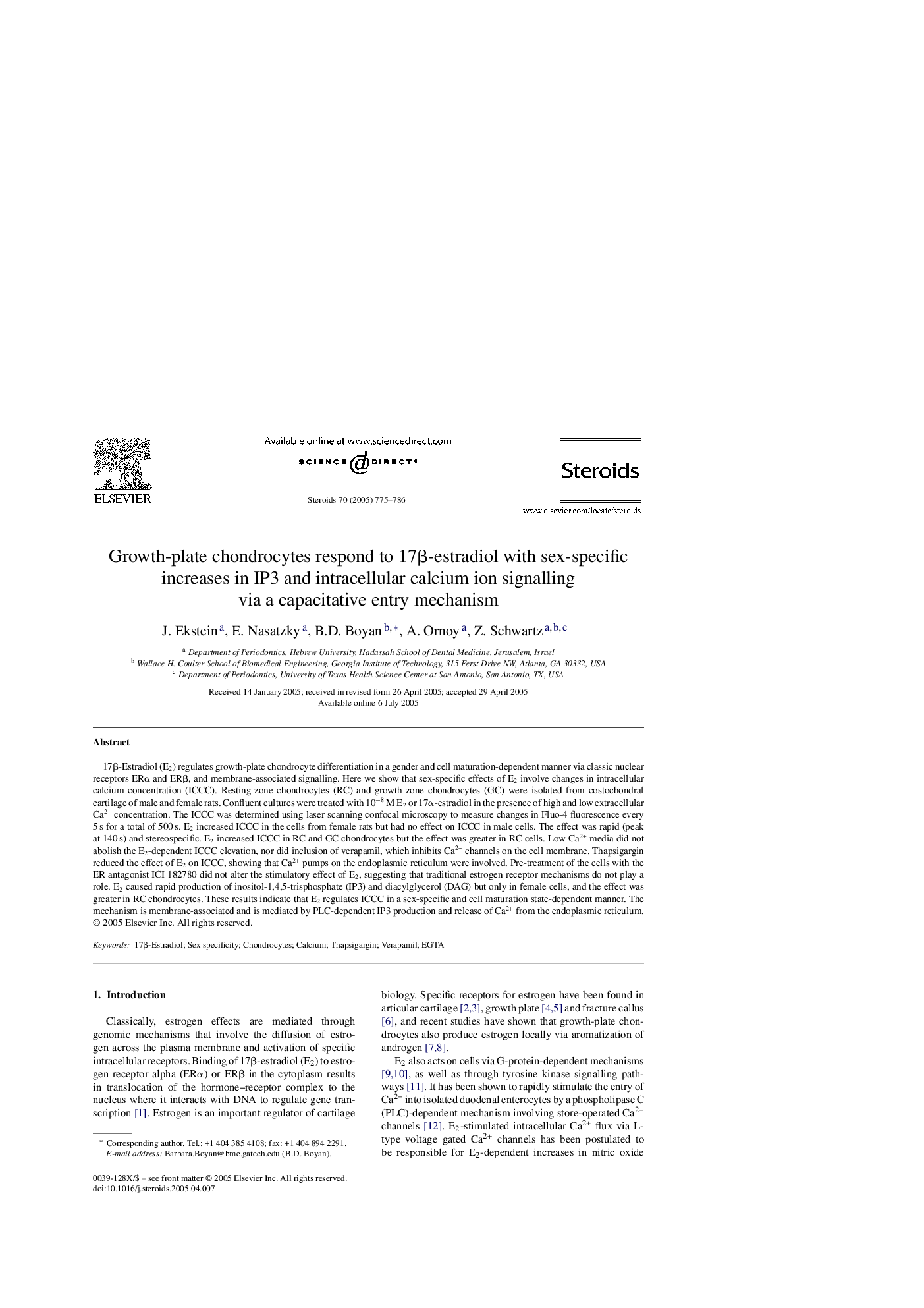| Article ID | Journal | Published Year | Pages | File Type |
|---|---|---|---|---|
| 10847803 | Steroids | 2005 | 12 Pages |
Abstract
17β-Estradiol (E2) regulates growth-plate chondrocyte differentiation in a gender and cell maturation-dependent manner via classic nuclear receptors ERα and ERβ, and membrane-associated signalling. Here we show that sex-specific effects of E2 involve changes in intracellular calcium concentration (ICCC). Resting-zone chondrocytes (RC) and growth-zone chondrocytes (GC) were isolated from costochondral cartilage of male and female rats. Confluent cultures were treated with 10â8 M E2 or 17α-estradiol in the presence of high and low extracellular Ca2+ concentration. The ICCC was determined using laser scanning confocal microscopy to measure changes in Fluo-4 fluorescence every 5 s for a total of 500 s. E2 increased ICCC in the cells from female rats but had no effect on ICCC in male cells. The effect was rapid (peak at 140 s) and stereospecific. E2 increased ICCC in RC and GC chondrocytes but the effect was greater in RC cells. Low Ca2+ media did not abolish the E2-dependent ICCC elevation, nor did inclusion of verapamil, which inhibits Ca2+ channels on the cell membrane. Thapsigargin reduced the effect of E2 on ICCC, showing that Ca2+ pumps on the endoplasmic reticulum were involved. Pre-treatment of the cells with the ER antagonist ICI 182780 did not alter the stimulatory effect of E2, suggesting that traditional estrogen receptor mechanisms do not play a role. E2 caused rapid production of inositol-1,4,5-trisphosphate (IP3) and diacylglycerol (DAG) but only in female cells, and the effect was greater in RC chondrocytes. These results indicate that E2 regulates ICCC in a sex-specific and cell maturation state-dependent manner. The mechanism is membrane-associated and is mediated by PLC-dependent IP3 production and release of Ca2+ from the endoplasmic reticulum.
Related Topics
Life Sciences
Biochemistry, Genetics and Molecular Biology
Biochemistry
Authors
J. Ekstein, E. Nasatzky, B.D. Boyan, A. Ornoy, Z. Schwartz,
